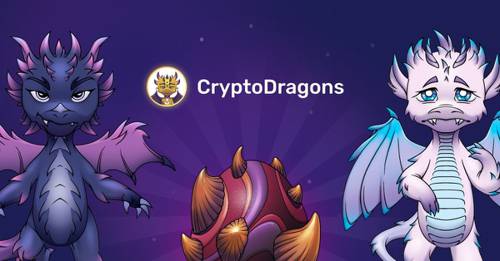
FAQ About The Role of Digital Art in Crypto and Blockchain Culture

What is the connection between digital art and blockchain technology?
Blockchain technology provides a decentralized ledger system that can securely store and verify digital art ownership. It ensures that each piece of digital art, often in the form of NFTs (Non-Fungible Tokens), can be tracked and authenticated, establishing provenance and preventing unauthorized duplication or forgery.

How do cryptocurrencies facilitate the digital art market?
Cryptocurrencies facilitate the digital art market by enabling direct peer-to-peer transactions without the need for intermediaries. This can result in lower transaction fees and allows artists to reach a global audience. Cryptocurrencies provide an additional sense of security and transparency, as all transactions are recorded on a blockchain.

What are NFTs and how do they relate to digital art?
NFTs, or Non-Fungible Tokens, are unique digital assets verified using blockchain technology. In the context of digital art, NFTs serve as a certificate of authenticity, proving ownership and originality of a digital artwork. This has revolutionized how digital art is sold, collected, and valued.

How has the introduction of NFTs impacted artists?
The introduction of NFTs has significantly impacted artists by providing them with new revenue streams and a larger audience. Artists can sell digital artwork directly to collectors worldwide, retain a percentage of future sales through smart contracts, and gain greater control over their work's distribution and pricing.

What role do online marketplaces play in the digital art ecosystem?
Online marketplaces are crucial to the digital art ecosystem as they provide platforms for artists to showcase and sell their digital artwork. These marketplaces, often built on blockchain technology, facilitate the buying and selling of NFTs and may offer tools for verifying authenticity and provenance.

Can digital art be considered a legitimate form of investment?
Yes, digital art can be considered a legitimate form of investment, especially with the rise of NFTs. Investors view NFTs as a way to diversify portfolios, and the increased adoption of blockchain technology gives digital art a formal structure for value assessment. However, as with any investment, it carries risks and market volatility.

What are some popular platforms for buying and selling digital art?
Some popular platforms for buying and selling digital art include OpenSea, Rarible, SuperRare, and Foundation. These platforms allow artists to mint, showcase, and sell their digital artwork as NFTs while providing collectors access to a wide array of creative works.

How does digital art ownership differ from traditional art ownership?
Digital art ownership, often through NFTs, is recorded on a blockchain, providing a transparent and immutable record of the work's provenance. Unlike traditional art, which involves physical ownership and can be subject to forgery, digital art allows for clear proof of ownership and originality in the digital realm.

Are there environmental concerns associated with digital art on blockchain?
Yes, there are environmental concerns, primarily due to the energy consumption of blockchain networks like Ethereum, commonly used for NFTs. The blockchain's proof-of-work model requires significant computational power, leading to large carbon footprints. Efforts are underway to transition to more sustainable systems, like proof-of-stake.

How does blockchain technology ensure the security of digital art transactions?
Blockchain technology ensures the security of digital art transactions by using cryptographic algorithms to encrypt transaction data, creating a secure and tamper-proof ledger. This decentralized approach prevents unauthorized access and manipulation, ensuring all transactions are legitimate and transparent.

What are some challenges digital artists face in the crypto space?
Digital artists face several challenges in the crypto space, including market volatility, the complexities of blockchain technology, potential scams, and copyright issues. Technical knowledge and understanding of digital wallets and cryptocurrencies are also barriers for some artists entering the field.

Can traditional artists benefit from blockchain technology?
Yes, traditional artists can benefit from blockchain technology by tokenizing their work, enabling them to sell digital representations as NFTs. This can expand their audience and markets, allowing artists to engage with new buyers and explore innovative ways of monetizing their creations.

What is crypto art, and how is it different from digital art?
Crypto art is a subset of digital art that is specifically linked to blockchain technology through NFTs. While all crypto art is digital, not all digital art is considered crypto art unless it is tokenized on the blockchain, providing unique attributes like provenance and monetization opportunities.

Why has digital art become popular in blockchain culture?
Digital art has become popular in blockchain culture due to the innovative potential of NFTs, which offer artists and collectors new ways to interact, buy, and sell art. The seamless integration of digital technology and art appeals to those interested in digital ownership and decentralized asset management.

What is the potential future of digital art in blockchain?
The future of digital art in blockchain is promising, with potential for wider adoption of NFTs, improvements in blockchain technology to reduce environmental impact, and the evolution of new artistic expressions. As technology advances, digital art may become more accessible, with increasing acceptance in traditional art communities.

How do smart contracts affect digital art transactions?
Smart contracts automate the execution of agreements on the blockchain, facilitating instant and trustless transactions of digital art. They can ensure that artists automatically receive royalties on secondary sales, enforce terms transparently, and reduce the need for intermediaries.

How are artists addressing copyright issues in digital art?
Artists are addressing copyright issues in digital art by utilizing blockchain's transparent ledger to establish verifiable proof of ownership and authorship. Some artists incorporate copyright terms into smart contracts, and others use platforms that offer copyright management and tracking tools.

What is the role of digital creators in the crypto ecosystem?
Digital creators play a vital role in the crypto ecosystem by producing original content that drives the demand for digital assets like NFTs. They contribute to the innovation and cultural influence within the crypto space, engaging audiences and expanding the possibilities of digital expression.

How do collectors benefit from buying digital art as NFTs?
Collectors benefit from buying digital art as NFTs by gaining unique digital ownership rights that are verifiable and transferable on blockchain networks. They can engage directly with artists, potentially profit from resale opportunities, and participate in a pioneering movement within the art world.

What are some criticisms of digital art in the blockchain world?
Criticisms of digital art in the blockchain world include concerns about environmental impact due to energy consumption, market speculation leading to bubble-like conditions, and the challenge of intellectual property protection. Additionally, the digital divide might prevent equal access to blockchain benefits.
